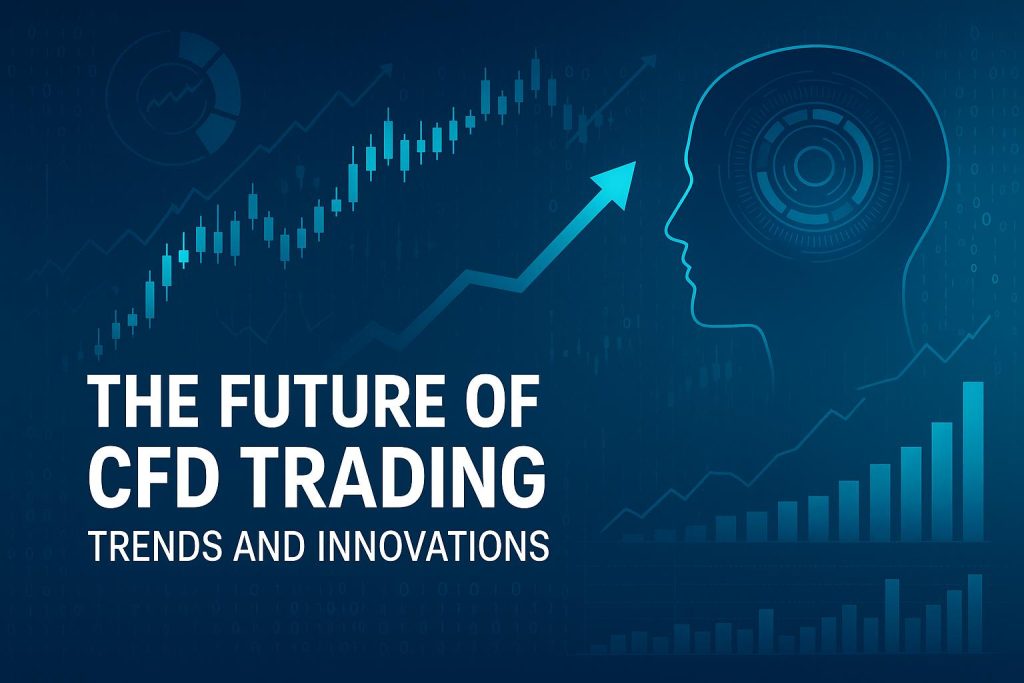The Evolution of CFD Trading
Contract for Difference (CFD) trading has seen remarkable changes over the past few decades. This financial instrument allows individuals to speculate on the price movements of various assets without having to own them. As technology continues to progress, the landscape of CFD trading is poised for continued evolution. Understanding these changes helps traders take advantage of new opportunities and adapt to emerging market dynamics.
Technological Advancements
The role of technology in reshaping CFD trading cannot be overstated. With the introduction of powerful computing technologies like artificial intelligence (AI) and machine learning (ML), trading algorithms have become increasingly sophisticated. These technologies are capable of analyzing massive datasets at unprecedented speed and accuracy, providing traders with robust tools that significantly enhance decision-making capabilities. The implementation of these advanced technologies marks a new chapter in the evolution of financial markets, making trading not only more efficient but also more reliable.
The potential impact of blockchain technology on CFD trading is also noteworthy. As a decentralized ledger system, blockchain offers enhanced transparency and security, which are essential for promoting trust and integrity in digital trading environments. This technology could disrupt traditional trading practices by offering a transparent record-keeping mechanism that ensures all transactions are accurate and fraud-free. As blockchain’s presence grows, traders must stay informed about how it could affect CFD trading practices in the future.
Mobile Trading and Accessibility
The advent of mobile trading has substantially increased accessibility to CFD trading. Mobile applications allow traders to engage with financial markets anytime, anywhere, increasing convenience and flexibility. Both aspiring and seasoned traders can now monitor and execute trades seamlessly, providing a more dynamic and responsive trading environment. Continuous improvements in mobile technology are expected to further enhance user experiences. Future platforms may feature even more intuitive interfaces, granting users an effortless experience in managing their trades, receiving real-time analytics, and staying updated on market trends. This mobility not only democratizes trading but also inspires diverse participation globally.
Growing Popularity of Cryptocurrencies
The rise of cryptocurrencies represents a significant shift in both traditional and CFD markets. Digital currencies, once niche, have now become a major asset class in financial markets. As more platforms offer cryptocurrency CFDs, a new wave of traders is entering the market, fascinated by the potential profits tied to the inherent volatility of digital currencies. With cryptocurrencies, the market is not only more accessible to young, tech-savvy traders but also comes with the potential for high returns, albeit with higher risks. As regulatory frameworks around cryptocurrencies continue to evolve, their assimilation and impact on the CFD market will likely become more pronounced and stable, influencing future market dynamics.
Regulatory Changes
Regulations ensure that CFD trading remains a fair and secure environment for all participants. Recently, regulatory scrutiny has intensified to protect traders from malpractices and enhance the integrity of financial markets. Market authorities are actively working to update policies and frameworks to address emerging challenges and innovations. These regulatory modifications aim to establish a safer trading environment, maintaining the credibility of the market. Traders, therefore, need to stay informed and adapt to these regulatory changes to ensure compliance and minimize potential risks.
Increased Educational Resources
The future prominence of CFD trading is not merely a result of technological advancements and regulatory shifts but is equally due to increased focus on trader education. With an ever-growing range of resources available online, traders have ample opportunities to improve their knowledge of market trends, trading strategies, and risk management. Online platforms offering courses, webinars, and discussion forums are proving indispensable in this educational evolution. By availing themselves of these resources, traders can enhance their understanding and execution of trading strategies, fitting them better to navigate the complexities of modern financial markets.
Integration of AI in Education
The integration of AI in education is emerging as a significant trend, particularly within CFD trading. AI-powered learning platforms can customize education experiences by analyzing individual performance metrics and providing content designed to improve a trader’s knowledge and skills. This personalized approach to trader education allows individuals to focus on areas needing improvement, making for a more tailored and effective learning journey. AI-enhanced educational tools are expected to contribute to a population of more informed and skilled traders capable of meeting the challenges of an evolving market.
Conclusion
The future of CFD trading promises to be dynamic, driven substantially by technological innovations, regulatory adaptations, and educational expansions. Each of these factors plays a crucial role in shaping a market that is not only more inclusive and efficient but also robust and secure. Traders who remain vigilant, educating themselves on these trends and adopting new technologies, will likely thrive in this ever-evolving environment. Embracing these changes is vital for capitalizing on new opportunities and participating in a more innovative and dynamic trading culture. The evolution of CFD trading stands as a testament to how markets adapt to the times, integrating the best of technology, regulation, and education to create a future that benefits traders globally.
This article was last updated on: October 9, 2025







